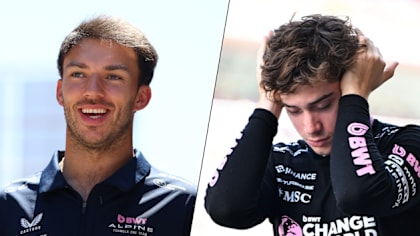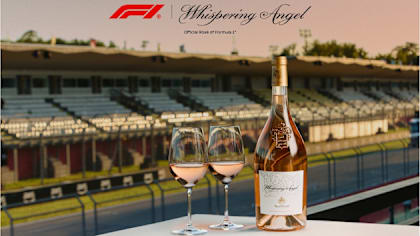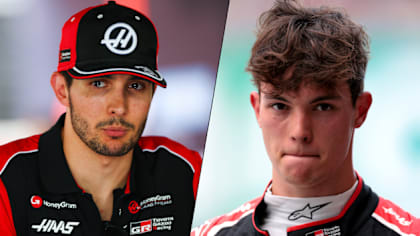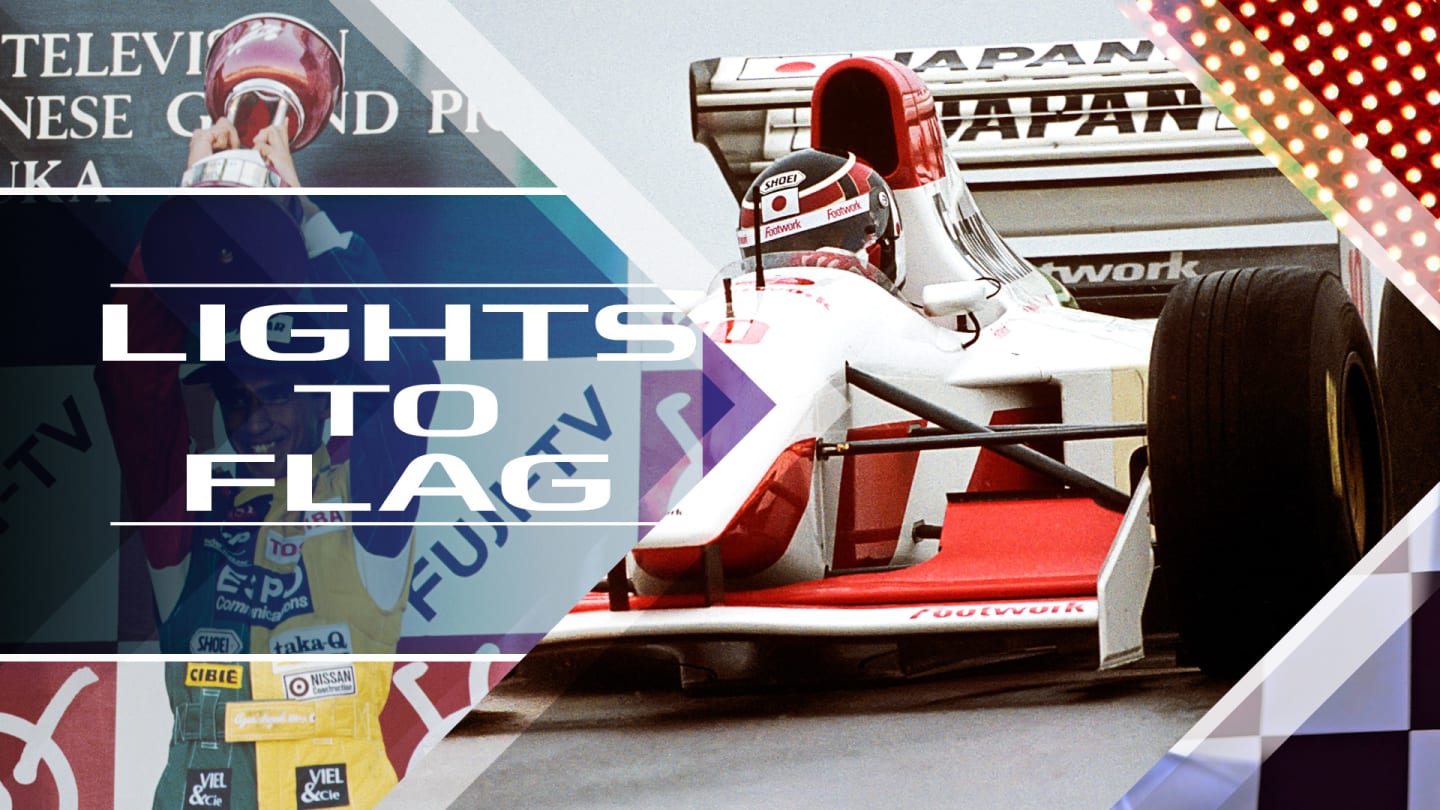
Feature
LIGHTS TO FLAG: Aguri Suzuki on that Suzuka podium, seat-sharing with Brundle, and running his own F1 team
Share

Aguri Suzuki rubber-stamped his place in Formula 1 history as the first Japanese racer to stand on the podium – doing so at his home race at Suzuka – while he also briefly operated his own team in the mid-2000s. In our latest Lights to Flag we catch up with the amiable Suzuki as he reflects on some of the key moments behind the wheel, and the pressure of running a Formula 1 outfit...
Starting out – and a home debut in F1
Tokyo-born Suzuki caught the motorsport bug as a teenager and climbed the single-seater ladder in his native Japan.
READ MORE: Formula 1 to race in Japan until 2029 after new five-year extension
“My father had a kart, and there was a track called Tokorozawa Circuit near my house, so I started driving karts in that environment and had fun, which is how I became interested in motorsports,” Suzuki says.
“While I was having fun, I started wanting to race, and I was able to win the championship at the All-Japan Championship. Then I drove Formula 3, but I didn't get very good results. Then Nissan gave me a chance and I decided to participate in a touring car race.”
Suzuki’s Formula 3 results eventually improved, twice placing runner-up, and he progressed in 1987 to Japanese Formula 3000 – now known as Super Formula – and finished runner-up, before going one better in 1988.
Ahead of Formula 1’s visit to Japan that year Suzuki was suddenly thrust into the deep end.

On his way up the ladder: Suzuki at the wheel of his Footwork F3000 car in 1988
“I was supposed to go to Suzuka for the 1988 Japanese Grand Prix to commentate on a TV programme,” Suzuki says. “But during the week of the race, I received a phone call from Mr Larrousse, telling me that his regular driver Yannick Dalmas was unable to participate due to illness, so I was asked to take his place as a substitute. ‘Could you please participate?’
“So I decided to participate in the Japanese Grand Prix in F1 with Larrousse,” he says matter-of-factly.
F1 Quiz – Suzuka Special: Test your knowledge on F1 history at the classic Japanese track
Suzuki qualified a respectable 20th in Larrousse’s LC88, one place behind team-mate Philippe Alliott, and completed the race in a thrice-lapped 16th. It put Suzuki in the frame for 1989 – though it proved to be a character-building year.
16 races, 16 DNPQs
Suzuki landed a spot with minnows Zakspeed for 1989, in an era where Formula 1’s grid size had exploded.
A total of 20 teams – and 39 cars (EuroBrun fielded only one entry) – signed up for the season, with grid capacity for each race set at 26 cars.
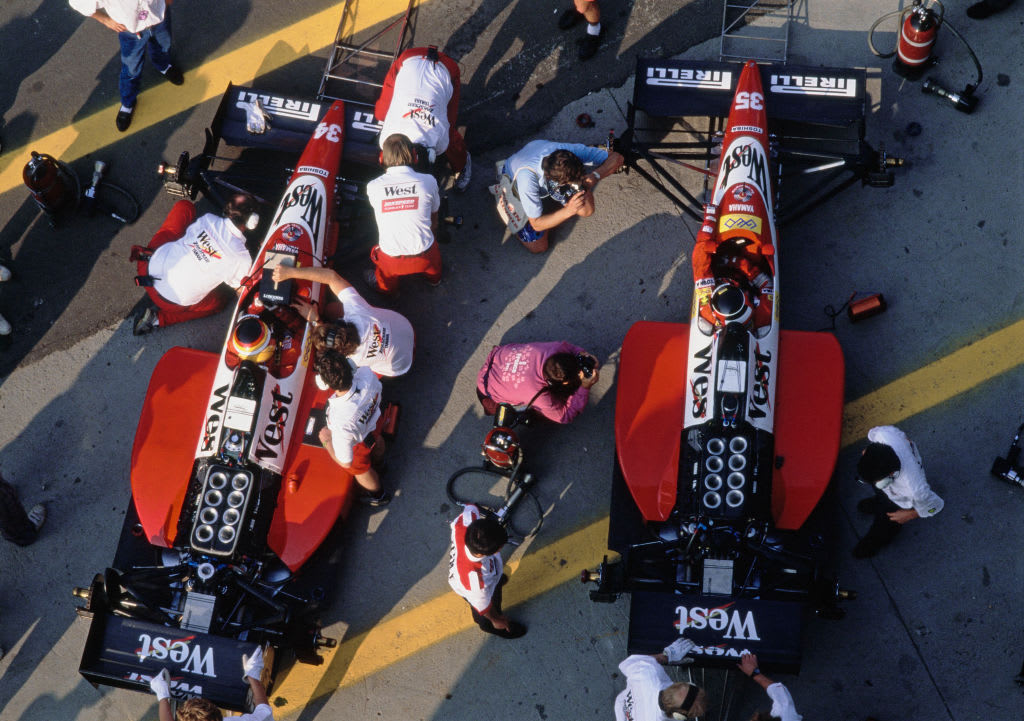
Suzuki and team mate Bernd Schneider had to try to pre-qualify for minnows Zakspeed in 1989
Zakspeed’s poor 1988 meant its two cars were among the 13 that had to participate in a one-hour pre-qualifying session, from which only four would progress into the 30-car qualifying session proper, from where another four would be eliminated.
Suzuki’s team-mate, Bernd Schneider, twice scraped onto the grid – and retired on both occasions – but Suzuki never made it out of pre-qualifying.
Zakspeed’s 891 was not a good car and performance wasn’t helped by the underpowered and unreliable engine produced by newcomers Yamaha.
“I had high hopes at first, but the car, team, and engine weren't exactly a good package,” Suzuki says. “As the season progressed, I didn't see any progress or improvement, so I felt disappointed.
“I don't want to say anything too bad about it because some of the staff were working hard, but to be honest it wasn't a fast car. It was also a difficult car to control.”
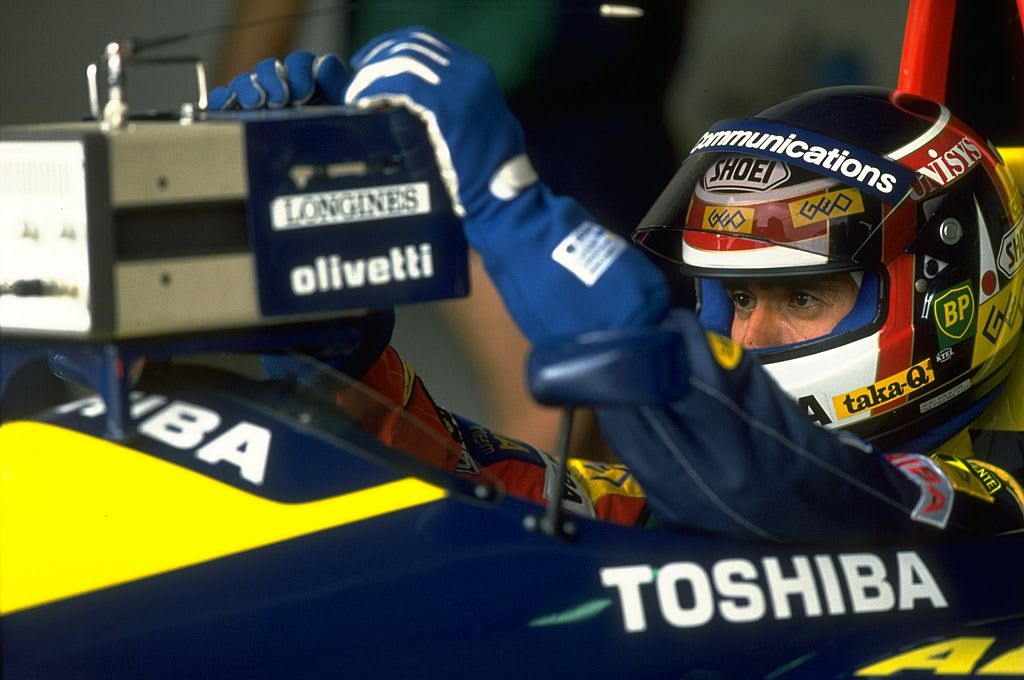
After Zakspeed, Suzuki switched to Larrousse for 1990
Zakspeed withdrew from Formula 1 after 1989 and Suzuki had 16 straight failures to pre-qualify to his name – but he remained resilient.
“There was no fear that my career would be over,” he says. “I would have been able to return to Japan and continue racing, but I had a stronger feeling that this would never be the end.
“Larrousse invited me to drive F1 again in 1990. Then, when I got into Larrousse's car, I felt that I could get results with this car. 1990 was a very important year for me to continue as an F1 driver because driving as hard as I could and getting results is what earned me recognition as a driver.”
That home podium
Fortunately for Suzuki, Larrousse had a more competitive package and the Lamborghini-powered Lola LC90 enabled both he and team-mate Eric Bernard to escape the dreaded pre-qualifying and get onto the grid.
Suzuki finished seventh at Paul Ricard’s French Grand Prix and improved to claim sixth at the British Grand Prix at Silverstone, capturing his maiden championship point – a result he replicated at the Spanish Grand Prix at Jerez.
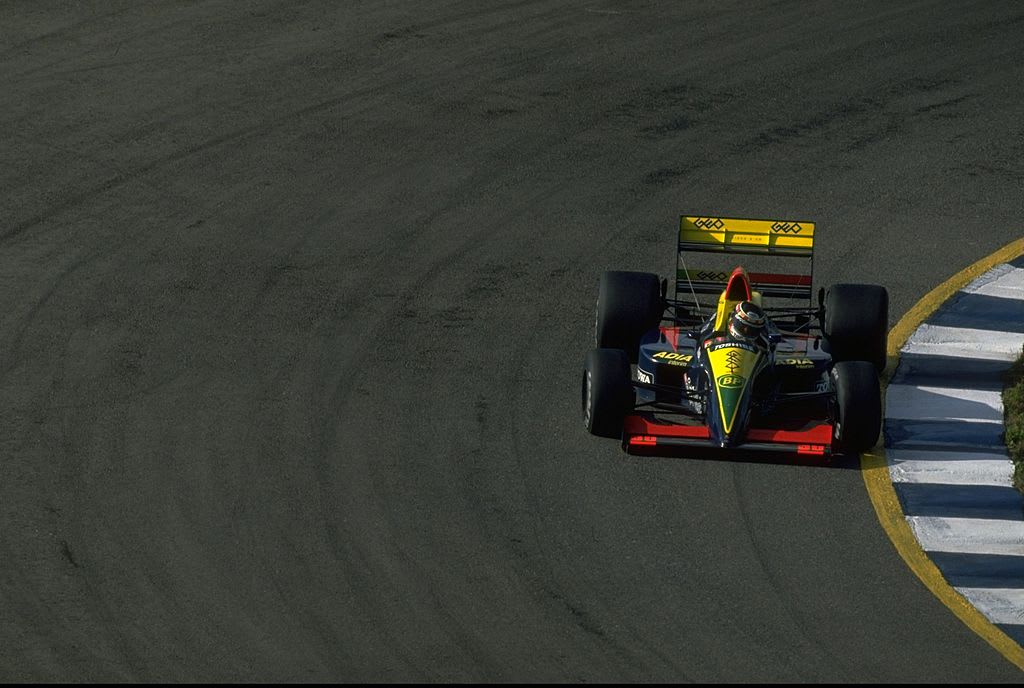
Suzuki scored a fine P6 at Jerez
The next round took place on home soil at Suzuka, two years on from his debut, and Suzuki qualified inside the top 10.
Famously, Alain Prost and Ayrton Senna collided into Turn 1, while other front-running contenders Gerhard Berger and Nigel Mansell also retired. Benetton scored an unlikely 1-2, and staying out of trouble in third position saw Suzuki seal that landmark podium.
READ MORE > TREMAYNE: From Senna vs Prost to 130R – why Suzuka is so special for F1 fans everywhere
“From the middle of the 1990 season, the balance of the car improved, and after scoring points in England and Spain, I returned to Japan, and I was glad that I was able to return to Japan in good shape overall,” Suzuki reflects.
“The car was in good condition from the start, and Suzuka is a course I know well, so I think we had a number of good elements. I knew I had to get results here.
“There were various accidents, but the gears worked together and I was able to stand on the F1 podium for the first time as an Asian, so it was a very big race for me and I was very happy!”
Senna and Prost collide, Japan 1990
Suzuki stayed with Larrousse for 1991 but sixth, and another point, in the opening round in Phoenix proved a false dawn, as a switch to Cosworth engines proved problematic.
“The driveability of the car itself hadn’t changed, but the engine had changed,” Suzuki says. “And I remember it being tough because it clearly lacked the power compared to engines from other manufacturers.”
Not so fancy Footwork
Suzuki joined Footwork Arrows for 1992/93 but despite securing a best grid spot of sixth, at Spa-Francorchamps, failed to add to his points tally, twice classifying seventh.
“Footwork's [1992] car had a very strong personality, so it wasn't the car that suited me,” Suzuki says. “The car and I didn't match at all. The oversteering was so strong that I couldn't ride it. Even after changing the settings, the oversteering did not go away. It didn't suit my driving style at all.
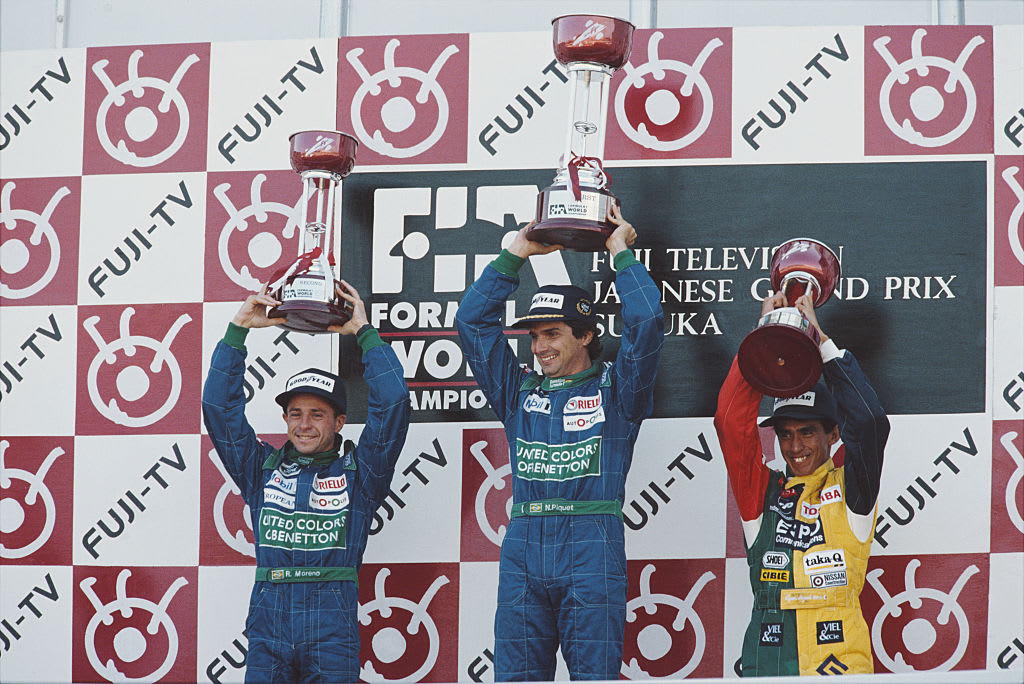
Suzuki (r) celebrates his P3 at his home race at Suzuka, as he became the first Japanese driver to claim an F1 podium finish
“In 1993, we had active suspension, so I was able to adjust the car to my liking, so I was able to run faster in qualifying than the last year.” Suzuki left the team and returned to his native Japan to race touring cars, though he made a one-off appearance for Jordan at the Pacific Grand Prix, at Aida, in place of the suspended Eddie Irvine.
Suzuki linked up with Ligier for 1995 but only as part of a seat-sharing deal, with the majority of the Grands Prix raced by Martin Brundle. Suzuki finished sixth at the German Grand Prix, at Hockenheim, and the atypical back-to-back races in Japan, at Aida and then Suzuka, were due to be Suzuki’s swansong.
PODCAST: When Senna punched Irvine – Listen to the full story, as told by those who were there
“The reason I only drove some races was because that was the contract,” Suzuki says. “I didn't do any test drives, so it was difficult for me to get into a rhythm. If I participated in every race, there would have been things I wanted to try, and challenges in the next race, but there were some parts where it was difficult to do so.”
Suzuki never made it as far as his last start as a crash during qualifying left him sidelined.
“The accident was because I was too aggressive,” Suzuki says. “I had already decided to retire from F1 when I turned 35, and I had planned to hold a retirement press conference at Suzuka. But unfortunately I was unable to hold that press conference due to the qualifying crash.

Suzuki drove for Ligier in 1995, but had to share the seat with Martin Brundle
“But I had decided from the beginning that I would retire at the age of 35 in order to take the next step. The next step was to create my own team and build my business.”
Suzuki remained active behind the wheel for several more years – most notably finishing third for Nissan at Le Mans in 1998 – but team ownership was a greater focus.
A return to F1
Suzuki’s teams have competed in multiple disciplines, most prolifically in Super GT as ARTA, while he has also aided young Japanese racers climbing the ladder.
Most famously Suzuki, with support from Honda, joined the Formula 1 grid in 2006 under the name Super Aguri, with the project kick-started after Japan’s second-ever podium finisher, Takuma Sato, was replaced at the main Honda team.
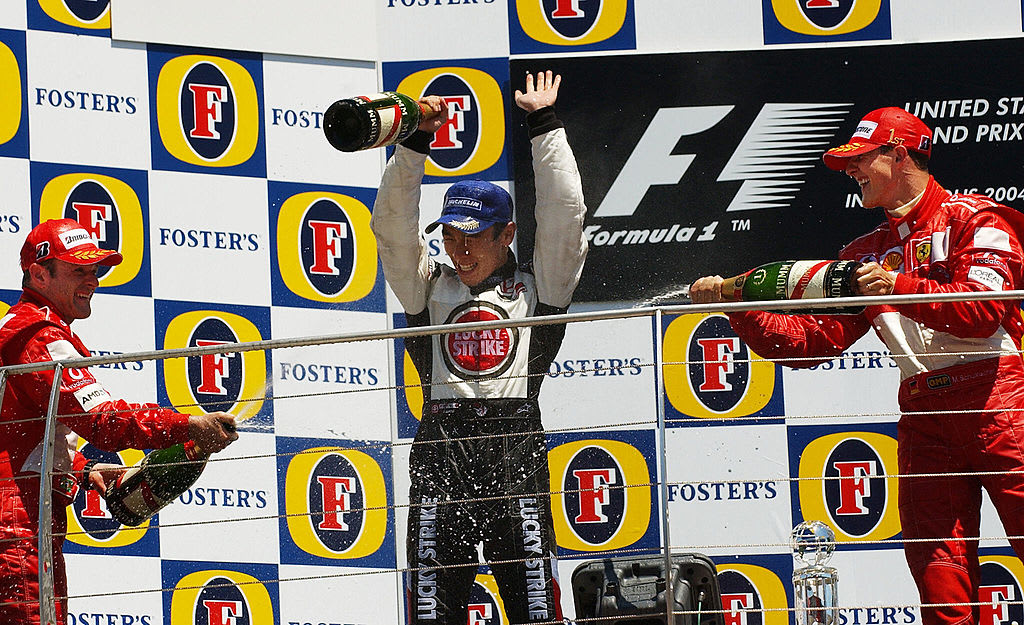
Honda driver Takuma Sato followed Suzuki as the second Japanese driver in history to score an F1 podium
“My goal was to form an F1 team by the time I was 45,” says Suzuki. “I went to great lengths to create an F1 team, but at that time, Takuma Sato came to help me, and I decided to fight alongside him. I think this is an F1 team that was built by Honda and many other companies and people who cooperated with us. But if I were asked to build a team like that one more time, I don't think I would be able to do it again!”
The team initially used a four-year-old Arrows chassis and was uncompetitive in 2006, but in 2007 the SA07 was a stronger proposition. Sato scored a point for eighth, in Spain, before a starring drive in Canada netted him sixth, famously passing world champion Fernando Alonso.
“The car was good and the team was headed in the right direction, so we felt confident that we could score points,” Suzuki says. “Although we were a small F1 team, we achieved good results with everyone's efforts, and the fact that Super Aguri won points will remain in the pages of F1 history for the rest of our lives, so it means a lot to me and I'm proud of it.”
But dark clouds loomed on the horizon and financial struggles impacted the team. Suzuki strove to find sufficient partners and backers – Honda’s support could go only so far – but after four events of 2008 had to pull the plug on the project.
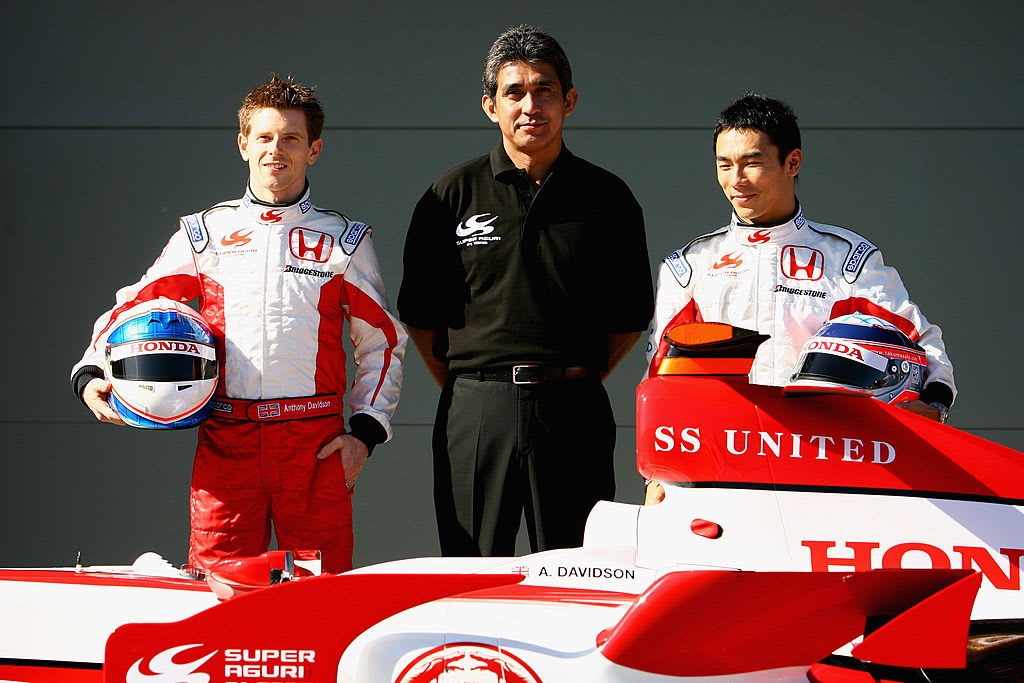
Aguri Suzuki with his Super Aguri drivers Anthony Davidson and Takuma Sato at the launch of the new car in 2007
“I didn't really feel like I was running an F1 team because it was more difficult to raise money than to run an F1 team,” says Suzuki.
“[Eventually] I had no choice but to quit. F1 costs a huge amount of money, but we had to raise the budget and have a lot of staff working to keep it running, so we were always faced with reality.
“It was my dream to make an F1 team, and although my time in F1 was tough, I had a lot of fun and I think it was a very meaningful time for me.”
Positive reflections
Suzuki’s time behind the wheel and on the pit wall means he belongs to a select group of people who have been both a driver and a team owner in Formula 1.
As a driver Suzuki entered 88 Grands Prix, starting 65 of them, and taking one podium and eight points. As a team owner Super Aguri started 39 Grands Prix and scoring four points.
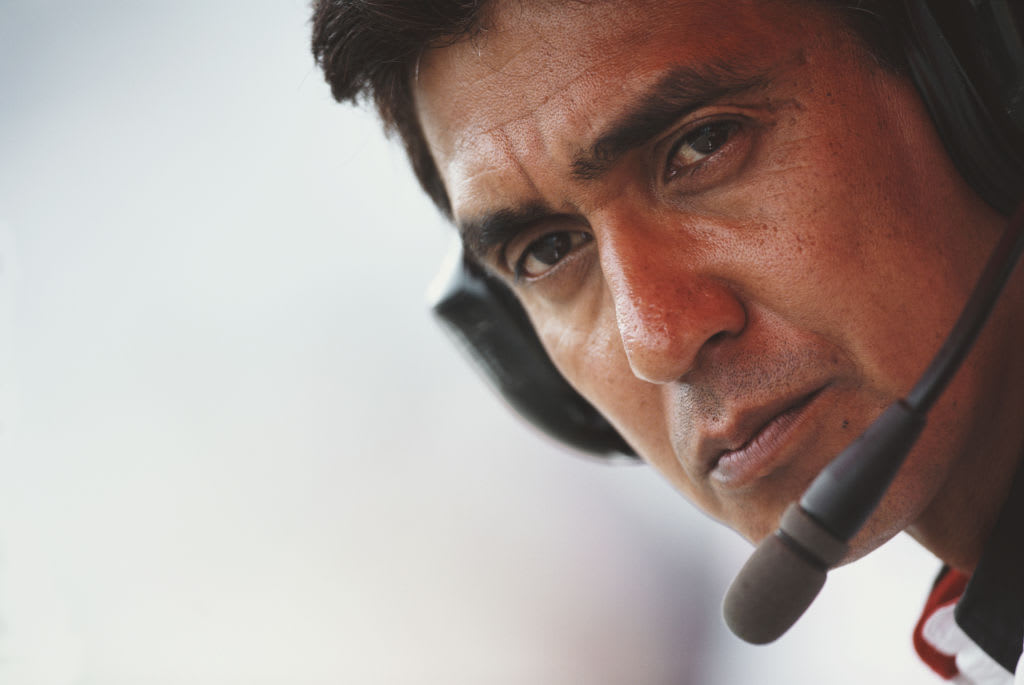
Life as a team boss wasn't easy – and the constant pressure to find more money eventually forced Suzuki to shut the team down
His influence in Japan’s motorsport scene has been widespread, with ARTA busy readying for their 2024 season in Super GT, and the now 63-year-old has a content view of his experiences.
“When I became an F1 driver, Satoru Nakajima had just entered F1, and up until then I had had very few opportunities to watch F1 in person in Japan – I only had a vague dream of riding in F1,” he says.
“However, looking back now, I think it was truly a miracle that I was able to become an F1 driver and form an F1 team.”
TOP 10: One-off podiums
YOU MIGHT ALSO LIKE
News Gasly ‘relieved’ as late Safety Car in Spain leads to points as Colapinto identifies key area to improve
News Whispering Angel announced as Official Rosé of Formula 1
News Ocon hoping Haas can ‘get back where we belong’ in Canada as Bearman admits Spain ‘exposed a few weaknesses’
Feature 6 Winners and 5 Losers from Spain – Who bossed it in Barcelona?

